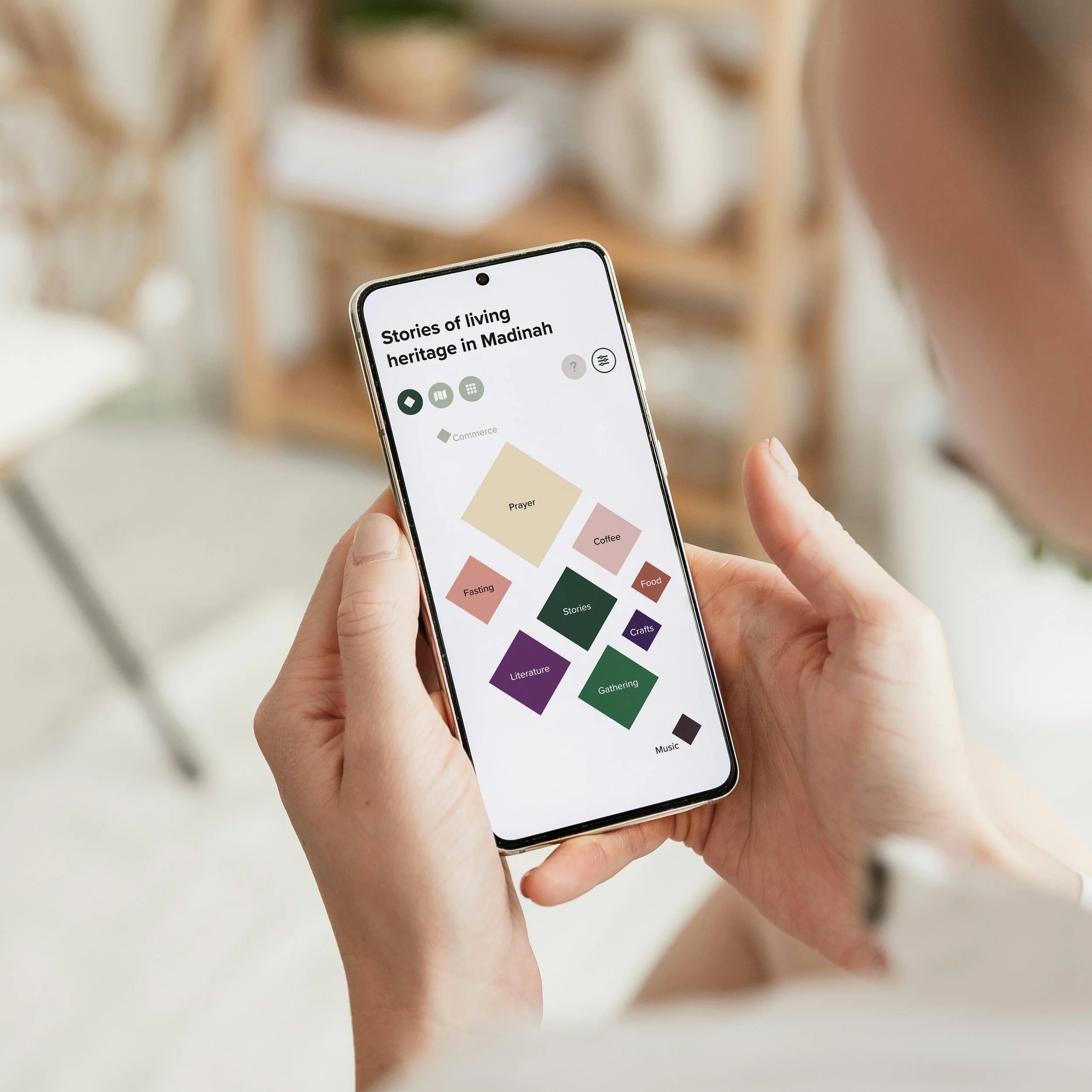Madinah Living Heritage
Cultural heritage research and digital storytelling platform.
For Madinah, while working at Gehl People.
Madinah, Gehl and MIT are tracking the complex urban challenges in Madinah through data, technology, and design. Working toward a human-centred city that values tranquility, social harmony, and nature.
Team:
Natalia Garcez, Clara McNair, Albert Mørk, Guitsa Herro, Virginia Lui, Liselott Stenfeldt, Jeff Risom, Amanda Gregor, Amira Badran, and many others from the Gehl, Madinah, and MIT teams.
Design deliverables:
UX // UI // Visual Identity
As part of Madinah’s ambition to double tourism by 2030, the city is prioritizing people, culture, and the preservation of its rich living heritage. Through a pilot project, our research explored how design can help bridge heritage preservation and urban development.
As the research focus, we addressed three core questions:
How can we identify placemaking characteristics that strengthen Madinah’s local identity and guide future design and development?
How can living heritage be shared in ways that enrich visitors’ cultural experiences and highlight local narratives?
Which spaces should be protected to preserve community rituals and ensure continuity of everyday life?




We used a mix of qualitative research methods. The method highlighted on this case is a digital platform for collecting citizens’ stories.
The platform empowers residents to share personal stories related to Madinah’s heritage.
Stories are geotagged via participatory mapping and become part of the Living Heritage Atlas — a growing, shared narrative of the city.
This approach opens up heritage preservation to a digitally connected Saudi audience, making storytelling more inclusive and interactive.
Every story shared by a citizen comes to life as a distinct visual tile, each one carrying its own colors, textures, and narratives. These tiles form a living mosaic, where individual memories connect to create a richer, collective portrait of Madinah’s identity.
Visitors can explore the stories in different ways:
Map view – discover stories tied to their exact locations, turning the city into an interactive cultural map.
Story cloud – see themes and keywords emerge from the shared heritage.
Tile grid – browse the collective in a visually rich, gallery-like experience.
The interface doesn’t just display information — it invites exploration, turning personal histories into a dynamic, shared narrative that grows with every contribution.
To complement the platform, we also developed a dedicated visual identity for the project. The design language drew inspiration from Madinah’s architectural motifs, color palettes derived from local landscapes, and typography that balances tradition with modernity. This visual identity ensured cohesion across the platform’s interface, promotional materials, and public engagement touchpoints, reinforcing the connection between the city’s heritage and its digital storytelling.
The visual tiles that define the project’s identity are built from simple geometric shapes, referencing the elegance and harmony found in Madinah’s traditional patterns. These shapes can be combined, rotated, or overlapped to create an endless variety of compositions — from intricate repeating patterns to bold, standalone tiles. This modular system allows the identity to adapt fluidly across different applications, ensuring versatility while maintaining visual cohesion. Whether used in the digital interface, printed materials, or wayfinding, these shape-based tiles become a unifying design element that ties every piece of communication back to the city’s cultural narrative.










